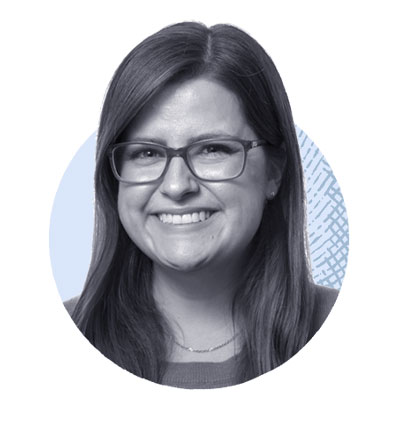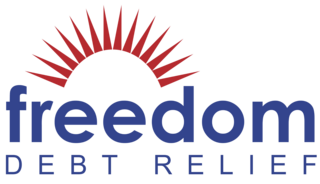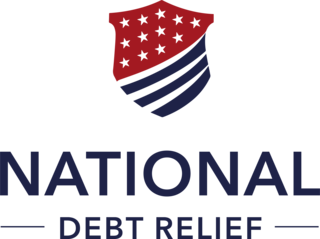Buy Now, Pay Later Is Pushing Its Way Into Everyday Shopping With Physical Cards

As Americans rack up record levels of household debt, the juggernaut that is buy now, pay later is quietly growing. Fifteen percent of consumers now say they have used the trendy installment plans to pay for items ranging from DoorDash meals to Coachella tickets.
The newest development? Last week, Klarna and PayPal separately announced new cobranded cards designed to expand their historically virtual BNPL plans into everyday shopping — both online and in stores.
But as BNPL plans become increasingly embedded in people's daily spending habits, so does the risk of accumulating debt. Making it easier to break up payments — even on small purchases — may blur the lines between a budgeting tool and debt trap, especially for those already on a financial tightrope.
"It's creating a cycle of dependency," says Alaina Fingal, an accountant and owner of The Organized Money. "Once consumers start using BNPL for essentials like groceries or gas, it can lead to a reliance on loans to meet short-term everyday needs."
Klarna, PayPal race to get consumers shopping in stores
Earlier this month, Klarna started to roll out the Klarna Card, a new debit card issued by Utah-based WebBank. The card will allow users to activate the company's popular Pay in 4 and Pay Later plans at over 150 million merchants that accept Visa. (Klarna has been experimenting with plastic payment options since 2022, but its physical credit card only came to the U.S. last year.)
Unlike Klarna's credit card, the debit card — which is in a trial phase stateside — is designed for everyday spending and integrates features like real-time transfers and direct deposits as part of its push beyond BNPL.
"We consistently hear from consumers that they want the freedom to choose how and when to pay — whether that's paying now with debit or spreading the cost over time," chief marketing officer David Sandström said in a news release.
On June 3, PayPal announced a new offering of its own: a physical credit card issued by Synchrony Financial that allows users to use PayPal Credit anywhere Mastercard is accepted, including in stores.
PayPal Credit is a revolving line of credit — similar to a traditional credit card — that lets users carry a balance and pay interest over time. The new card also gives "customers looking for flexibility" the option to apply for a BNPL-style loan at checkout, per a news release.
The move to launch cards isn't just about expanding payment options. It’s also a strategic shift by Klarna and PayPal to gain traction where most shopping still happens: in person. While BNPL has thrived in online checkouts, it's lagged behind in physical retail, which still accounts for the majority of U.S. retail sales.
By embedding BNPL into the swipe (or tap) of a card in a brick-and-mortar store, these companies say they are giving people more control over how they pay. But they also may be making it easier to slip into debt, especially for everyday expenses.
Because BNPL has mostly lived online, you might not have thought to break up a $40 IRL Target run into four $10 payments. Now, with a physical card in your wallet, it's easier than ever to reach for it at the checkout counter... even if you don't really need to pay over time.
And that ease of use may disproportionately affect financially vulnerable users, who already make up a large share of BNPL borrowers and often rely on credit to bridge income gaps. If you're already living paycheck-to-paycheck, the ability to break up payments can be tempting.
The hidden risks of BNPL
Over the past two decades, startups like Klarna, Affirm and Afterpay have pitched buy now, pay later plans as a low-risk alternative to credit cards — a trend that took off during the pandemic. Unlike traditional credit cards, BNPL services often offer interest-free installment payments and instant approval, appealing to budget-conscious shoppers.
But that "pay later" promise can shift how consumers think about money. As short-term lending plans evolve and expand into more hands with new products, experts warn they may lead consumers into dangerous territory — especially when used to cover basic necessities.
"It's a powerful psychological device that allows consumers to rationalize incurring debt and make it feel attractive or even wise," says Jason Steele, a credit card expert. "Paying now avoids debt and interest costs, even if it doesn't sound very attractive."
Because BNPL plans often break payments into smaller chunks, they can feel deceptively manageable.
But stacking multiple BNPL plans can quickly snowball. Klarna's Pay in 4, for example, allows users to split payments into four installments. If you're relying on this payment option multiple times in one week, you could end up juggling a dozen payments across the month — making it easy to lose track of payments, overextend yourself with payments you can't actually afford and potentially incur late fees.
Ultimately, says Fingal, this can encourage a bad habit of purchasing items you cannot afford. (Indeed, survey results published in May by the Federal Reserve found 24% of BNPL users were behind on payments last year.)
Spreading out payments may feel helpful in the moment, but it comes with trade-offs that are easy to overlook. So if you're considering one of these new BNPL cards — whether from Klarna, PayPal or a future provider — proceed with caution. Although BNPL offerings can offer short-term flexibility, they shouldn’t be used to patch persistent financial gaps.
"If you can't pay for it in full today, seriously consider waiting or saving up," Fingal says. "Klarna and PayPal's BNPL tools are convenient, but convenience can come at the cost of future financial flexibility."
More from Money:
Buy Now, Pay Later Loans Can Now Appear on Your Credit Report
Borrowers Can Still Get Student Loan Forgiveness. Here's How





